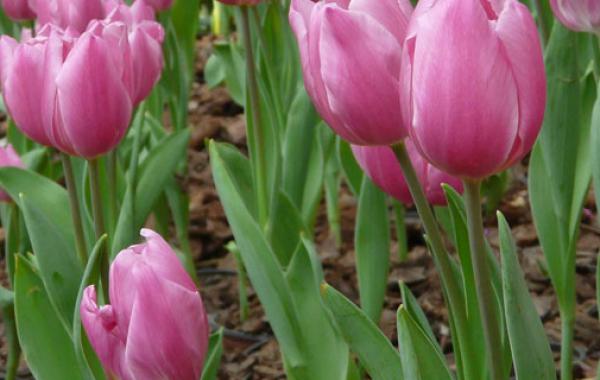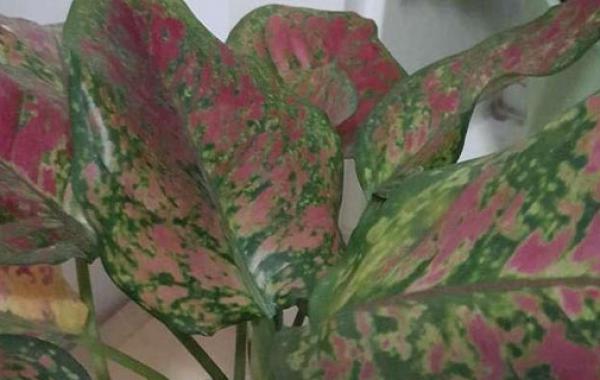Five taboos, six precepts and nine principles in flower culture

First, avoid drought.
When I think of watering, I don't water it if I don't remember it. Sometimes I don't care for several days in a row. Once the leaves are found to be wilting, they quickly replenish the water, and the leaves return to normal. This is a reaction of the pile body to adapt to the environment, but for a long time, excessive transpiration will eventually make the pile body "sick" difficult to recover, dehydration and death.
Second, avoid fertilizing.
Due to the high temperature in midsummer and the rapid loss of water on the leaf surface, fertilization can make the concentration of pile cells less than that of the external environment, resulting in the reverse flow of water in plant cells and the death of piles due to fertilizer damage.
Avoid taking a bath in the afternoon.
Do not spray water to the pile under the light or water into the basin at noon in hot summer, this kind of "pet" way will make the bonsai temperature suddenly lower than the ambient temperature and hurt the pile.
Fourth, avoid sudden shade.
In general, in order to avoid high temperature injury, when the ambient temperature exceeds the maximum temperature tolerated by the pile, the bonsai should be moved to a relatively low temperature area with weak light (about 2 degrees) to facilitate the growth of the pile, but if it is suddenly moved into the indoor or low temperature area without light, within a few days, the leaves will fall off naturally, and the pile will quickly shrink and die.
Fifth, avoid water stains.
When the ambient temperature exceeds 28 degrees, the bonsai should be protected by shade, otherwise, the amount of water obtained by the pile from the soil is much lower than that lost by transpiration, the leaf edge will be burned and scorched, and the pile will die from sunburn.
Six precepts of Flower Culture
Family greening has become more and more common, but many flower lovers have withered their heads and become lifeless as a result of missing the point. What's the problem? Here are several experiences of family flower cultivation summed up from practice:
The precepts are careless. Flowers, like people, are alive and need to be carefully cared for. Many flower growers lack the careful and diligent attitude they should have towards these beautiful lives. First, they are lazy, do not like to delve into the knowledge of flower cultivation, have been willing to be laymen for a long time, and have no way of management. Second, lazy hands, unwilling to spend too much time and energy on flowers. After the flowers entered the house, they were left out in the cold, suffering from hunger and thirst for a long time, and suffering from diseases and insect pests. In this way, even the best flowers will gradually wither. So lazy people can't grow flowers well.
Second, abstain from loving too much. Contrary to the above situation, some flower growers love flowers too much and itch their hands if they don't fiddle with them for a while. Some plants are irregularly watered and fertilized, and when they think of it, flowers are waterlogged and fertilized to death; others move flowerpots around casually and can move several places a day, so that flowers have to adapt to the environment frequently and disrupt the normal growth law. It would be strange not to toss the flowers to death for a long time. There are several pots of comfortable flowers at home, and there is nothing wrong with liking them, but flowers, like people, have their own growth rules. If they are disturbed frequently when they need a rest, they will naturally feel tired and grow poorly.
There is no distinction between the three precepts and the bad. Some flower growers are greedy for perfection and move home no matter what variety they see. this not only brings difficulties to management, but also brings some unsuitable flowers into their homes, polluting the environment and harming their health. For example, flowers with poisonous juices can easily cause poisoning when people come into contact with them. The smell of some flowers has an impact on people's nervous system, easy to cause shortness of breath and even allergic reactions. Plants with sharp thorns in appearance also pose a certain threat to human safety, and so on. In short, family flower cultivation should not be greedy for perfection, regardless of the difference between buttercup and attrition, should choose some small plant shape, beautiful appearance, harmless species to the human body.
The four precepts pursue fame and fortune. Some flower lovers think that it is necessary to raise famous flowers, because famous flowers have high ornamental value and make great profits in the market. Under this kind of psychological domination, they did not hesitate to spend a lot of money to buy famous flowers and trees everywhere. The result is often due to the lack of good greening maintenance conditions and management technology, the flowers died soon after they were bought, which not only practiced the precious flowers, but also wasted money, which is a misunderstanding in the concept. The correct approach should be to start with ordinary, lower-grade species, and gradually explore the laws and skills of growing flowers. Wait to reach a certain level of technology, and then gradually purchase more expensive types, so that the assurance of success is great.
The five precepts were in the twilight of Qin Dynasty. Some flower growers are impetuous and have no theme, and the flowers in their homes are swapped like lanterns. This is a big taboo for growing flowers. First, the change of species is too fast and the planting time is short, which is not conducive to the cultivation of flowers and trees with beautiful shape and high ornamental. The second is to dabble in each kind of flower, which is not conducive to the improvement of the level of flower cultivation, and is still a flower blind in the end. Therefore, only by choosing one or two kinds of flowers and focusing on research and cultivation, can flower growers get something from their hearts.
The concept of the six precepts is not new. Nowadays, new knowledge and new technologies emerge one after another in the flower industry, but most flower growers still adhere to the traditional maintenance methods, and are not good at making use of new technologies and equipment in the use of flower utensils, water and fertilizer management, seedling cultivation and so on. such as soilless cultivation, odorless flower fertilizer and all kinds of flower utensils. As a result, the family flower cultivation is unhygienic, not beautiful, not novel, and has great side effects.
Related
- What if the leaves of potted flowers turn yellow?
- Florescence Control of several Flowers
- Anti-freezing technology and post-freezing nursing technology of flowers
- What is the classification of flowers? What are the common methods of flower classification?
- Prevention and control of alkali and acid damage of flowers in courtyard
- Technology of Anti-freezing and restoring growth of Flower seedlings in greenhouse and greenhouse
- How does flower fertilization not hurt the root? Fertilization technology of flowers
- Key points of disinfection in flower greenhouse
- Several pesticides that are banned or used cautiously in flowers
- How to fertilize the flowers that watch the leaves?



